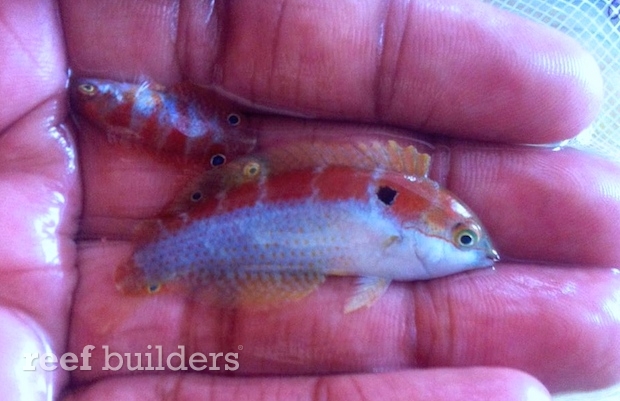While Macropharyngodon may not enjoy the popularity of other wrasses such as Cirrhilabrus, it is most certainly not stuck in a rut. The genus is not heading in a dead end track, but rather has had a few interesting developments recently. With M. pakoko being the newest addition to this genus a few months back and M. marisrubri being separated from M. bipartitus last year, the genus is slowly but surely increasing in members. Most recently another leopard wrasse has its name in the news, and this time it is none other than M. vivienae.

Macropharyngodon vivienae is a beautiful species that hardly enters the trade. Being more elongated than the other members and having a distinct preopercular spot on its cheek, M. vivienae belongs to the kuiteri complex which houses three species – M. kuiteri, M. vivienae and the japanese endemic M. moyeri. All three members are characteristic in having not so much a spotted “leopard” appearance of their namesake genus, but rather a pearlescent pink or whitish ground colour.
Of the three species, M. kuiteri is the easiest to obtain, followed by M. vivienae. M. moyeri has not yet enter the trade. M. vivienae was thought to be endemic to Madagascar and the east African coast in waters ranging from 65 – 130 ft, but in 2010 an individual was collected in Kenya. Not many specimens have been collected since then, and the few sporadic individuals from then till now have all been from Madagascar, where the equally rare Paracheilinus hemitaeniatus comes from. Just last week, Meneeka Gurroby from Ornamental Marine World LTD in Mauritius shared with us a photo of two juveniles and a sub-adult individual caught locally in their waters.

These are some of the few rare images of a juvenile of this species. When Meneeka first showed us the minuscule specimen for identification, we were skeptical at first. However based on the geographical location and elimination of the juvenile forms of M. bipartitus, M. cyanoguttatus and M. lapillus, the next most plausible species with a little bit of an educated guess would be M. vivienae. The patterning is similar to that of M. kuiteri at the same life stage, which is a member of the same complex. So although it was previously not recorded from Mauritius, that was the best fit. Indeed with the collection of a sub-adult, the range extension is confirmed.
In larger individuals, the tail is edged in yellow but is clear centrally. This cannot be seen in younger specimens such as these, but is very clear in this adult filmed by Dr. Chung. With the new found collection locality of this beautiful species, it is probably going to be easier for hobbyists to get their fingers on one. Kudos to Meneeka and her family for this incredible find.



